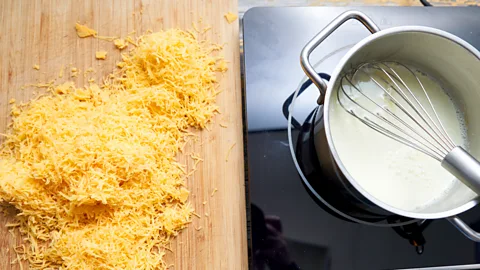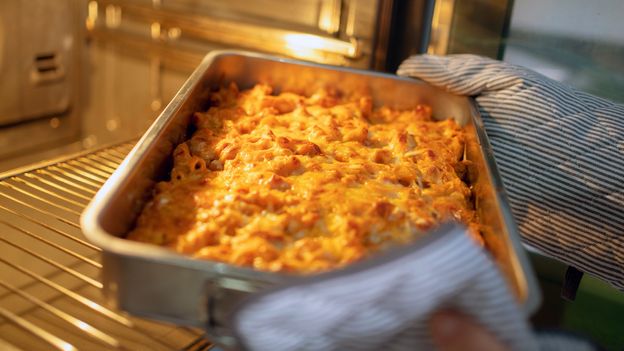As Hemings served these French-inspired dishes to dignitaries, American socialites and many of the era’s top tastemakers up and down the east coast, many of his dishes and cooking methods became de rigueur in households across the newly formed nation. According to Brown, most American foods of the time would have been cooked over a hearth or in an open fireplace. Hemings’ dishes however, required more advanced methods and a stew stove, the precursor to the modern stove, which would have allowed for greater control over the heat. As the well-to-do guests who dined with Jefferson wanted to emulate Hemings’ cooking style, the enslaved chef began to heavily influence the US’s culinary culture.
“The way that we eat [in America], the way that we cook, the foods that we celebrate, all these different things come to [us through] the lens of that one moment where Thomas Jefferson brought this person to [Paris],” said chef Omar Tate, whose newly opened Philadelphia restaurant Honeysuckle serves dishes from across the African diaspora. “He technically was a celebrity chef because everyone knew the slave that Thomas Jefferson had [in his kitchen].”
 Getty Images
Getty ImagesThe baked dish then called “macaroni pie”, was a particular favourite of Jefferson’s and was frequently served at his table. Hemings’ version was created by cooking the macaroni in a mixture of milk and water, and then layering cheese and butter with the cooked pasta before baking.
It’s unknown whether the “macaroni pie” served at Monticello during Hemings’ time as chef was a faithful recreation of what was being served in Paris during in late 18th Century or whether Hemings altered it to suit his own – or more likely, Jefferson’s – tastes. What is known is that over the following century, dishes resembling Hemings’ version became more widespread across the US, helped along by a combination of broader trends.
First, the influx of Italian immigrants in the 1880s increased the availability of pasta in the US. At the same time, industrialisation transformed both pasta-making and cheese-making, allowing factories to mass produce ingredients that would previously have been difficult to obtain. In 1937, the Kraft company introduced a boxed version of macaroni and cheese as a cheap and easy meal during the Great Depression. (Its slogan was: “Make a meal for four in nine minutes”.) During World War Two, people could purchase two boxes for a single ration point, cementing its place in American home cooking.
Today mac and cheese is a $2.9bn industry, and some sources say the average American eats it 22 times a year – second only to pizza. Yet, the man who may have first introduced it to American diners is only now becoming more widely recognised.
 Thomas Jefferson’s Monticello
Thomas Jefferson’s Monticello














